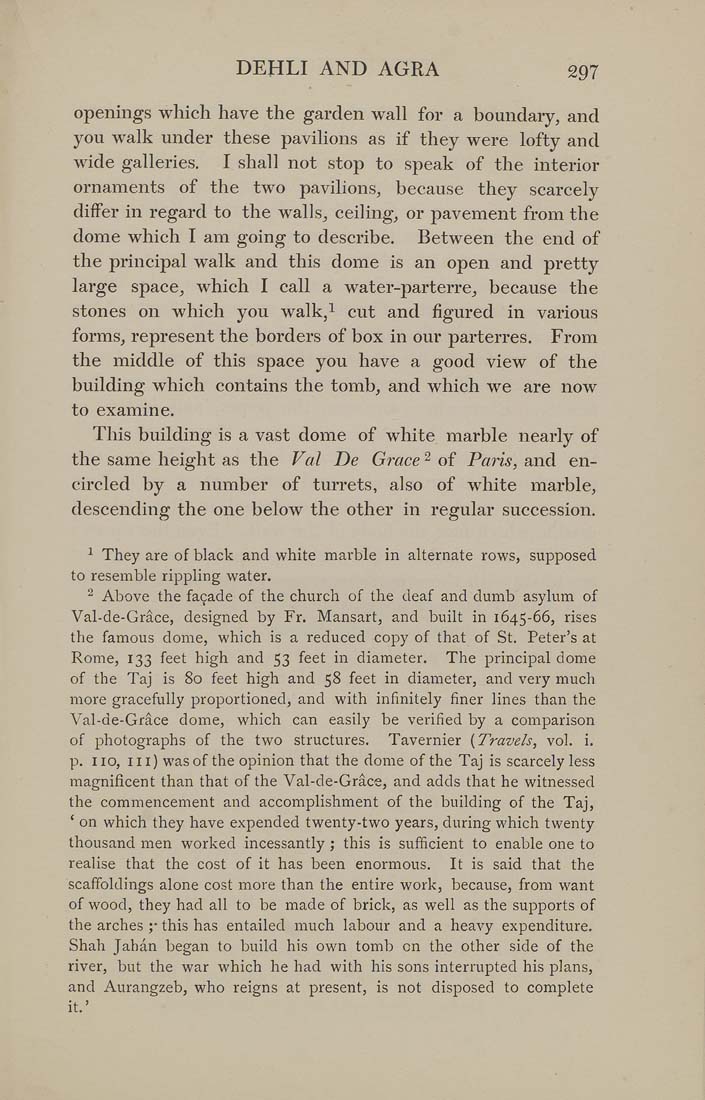DEHLI AND AGRA 297
openings which have the garden wall for a boundaiy, and
you walk under these pavilions as if they were lofty and
wide galleries. I shall not stop to speak of the interior
ornaments of the two pavilions, because they scarcely
differ in regard to the walls, ceiling, or pavement from the
dome which I am going to describe. Between the end of
the principal walk and this dome is an open and pretty
large space, which I call a water-parterre, because the
stones on which you walk,! cut and figured in various
forms, represent the borders of box in our parterres. From
the middle of this space you have a good view of the
building which contains the tomb, and which we are now
to examine.
This building is a vast dome of white marble nearly of
the same height as the Val De Grace ^ of Paris, and en¬
circled by a number of turrets, also of white marble,
descending the one below the other in regular succession.
^ They are of black and white marble in alternate rows, supposed
to resemble rippling water.
^ Above the fafade of the church of the deaf and dumb asylum of
Val-de-Grace, designed by Fr. Mansart, and built in 1645-66, rises
the famous dome, which is a reduced copy of that of St. Peter's at
Rome, 133 feet high and 53 fes' in diameter. The principal dome
of the Taj is 80 feet high and 58 feet in diameter, and very much
more gracefully proportioned, and with infinitely finer lines than the
Val-de-Grace dome, which can easily be verified by a comparison
of photographs of the two structures. Tavernier {Travels, vol. i.
p. 110, III) was of the opinion that the dome of the Taj is scarcely less
magnificent than that of the Val-de-Grace, and adds that he witnessed
the commencement and accomplishment of the building of the Taj,
' on which they have expended twenty-two years, during which twenty
thousand men worked incessantly; this is sufficient to enable one to
realise that the cost of it has been enormous. It is said that the
scaffoldings alone cost more than the entire work, because, from want
of wood, they had all to be made of brick, as well as the supports of
the arches ;■ this has entailed much labour and a heavy expenditure.
Shah Jahan began to build his own tomb on the other side of the
river, but the war which he had with his sons interrupted his plans,
and Aurangzeb, who reigns at present, is not disposed to complete
it.'
|








